Whole Psyllium Husk vs Powder: Which Form Works Best for You? Experts Guide 2025
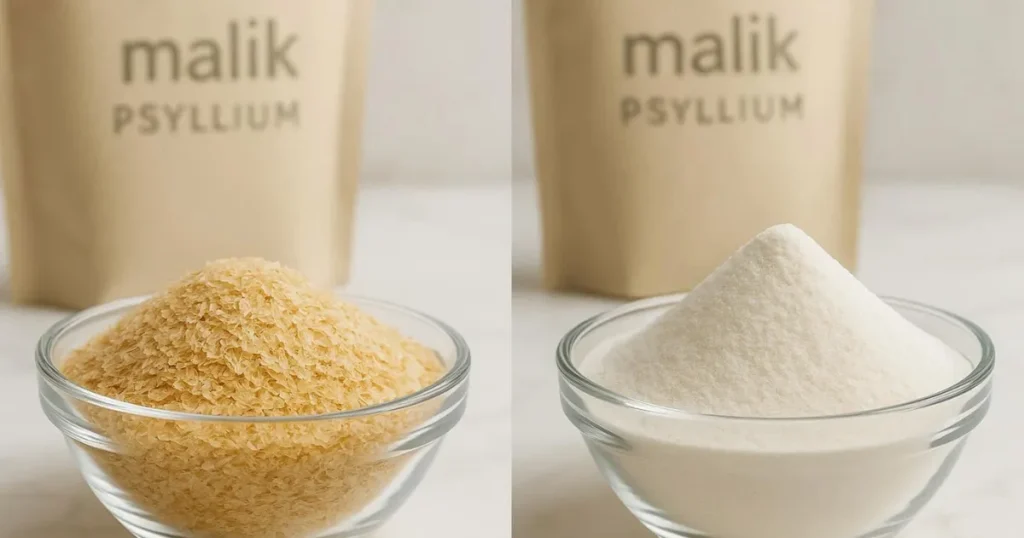
If you’ve ever stood in the supplement aisle wondering whether to grab whole psyllium husk vs powder, you’re not alone. Both forms come from the same incredible seed coating of Plantago ovata, yet they behave quite differently in your body and kitchen. As someone who’s spent decades growing, processing, and studying psyllium across vast farms in Pakistan, I’ve seen thousands of customers struggle with this exact decision. Let me walk you through everything you need to know to make the right choice for your health goals, lifestyle, and daily routine.
What’s the Real Difference Between Whole Psyllium Husk vs Powder?
The fundamental difference lies in texture and processing. Whole psyllium husk consists of the outer coating of psyllium seeds, harvested and cleaned, but left in its natural flake-like form. These husks look like tiny golden-brown flakes, slightly coarse and fibrous. Psyllium husk powder, on the other hand, is created by grinding these same husks into a fine, silky powder that resembles flour.
Both forms contain soluble fiber that absorbs water to form a gel-like substance in your digestive tract. However, the surface area differs dramatically. Powder has exponentially more surface area than whole husk, meaning it absorbs liquid much faster and more thoroughly. This single characteristic creates a cascade of practical differences in how you’ll use them.
The processing method matters too. Quality manufacturers preserve the husk’s natural properties during grinding, ensuring the fiber content remains intact. At Malik Psyllium farms in Pakistan, we use temperature-controlled grinding processes that prevent heat damage to the delicate fiber structure, maintaining the nutritional integrity that makes psyllium so effective.
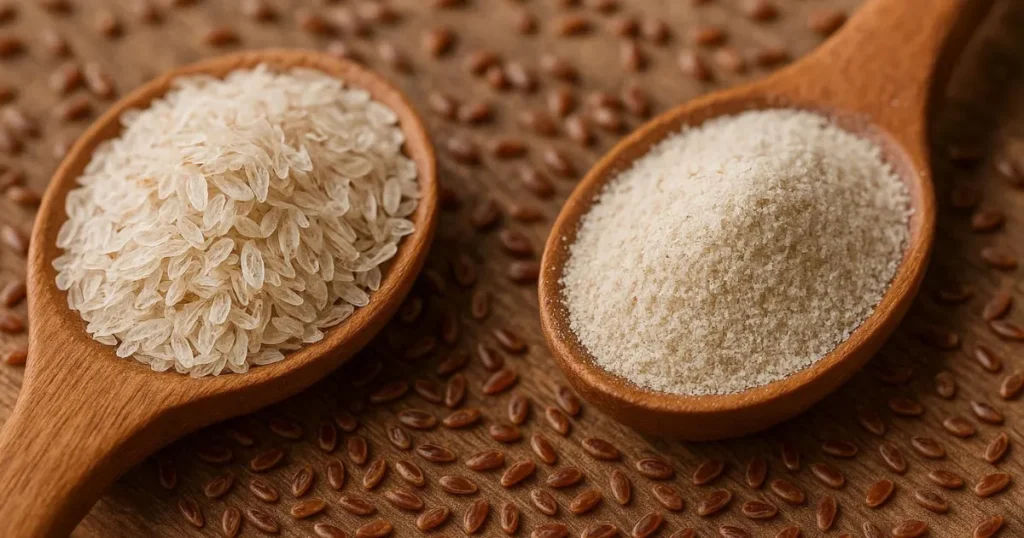
Texture and Mixing: How Each Form Behaves
When you mix whole psyllium husk with water or juice, you’ll notice it takes 30-60 seconds to fully hydrate. The husks float initially, then gradually sink as they absorb liquid. The resulting texture is slightly grainy with visible fiber pieces – some people find this more satisfying because they can “see” the fiber working.
Psyllium husk powder behaves completely differently. It dissolves almost instantly, creating a smooth, uniform gel within 10-20 seconds. There’s virtually no grittiness if you drink it quickly. However, if you wait too long, powder forms a thicker gel than whole husk, sometimes becoming too gelatinous for comfortable drinking.
This textural difference extends to cooking and baking. Whole husk adds visible texture to smoothies, yogurt bowls, and baked goods – think of tiny seeds in multigrain bread. Powder disappears completely, making it ideal when you want fiber benefits without altering texture. In gluten-free baking, powder creates smoother batters and binds ingredients more effectively than whole husk.
For those new to psyllium, powder might seem easier initially because it mixes faster. However, experienced users often prefer whole husk precisely because it absorbs liquid more slowly, reducing the risk of choking or uncomfortable clumping in the throat.
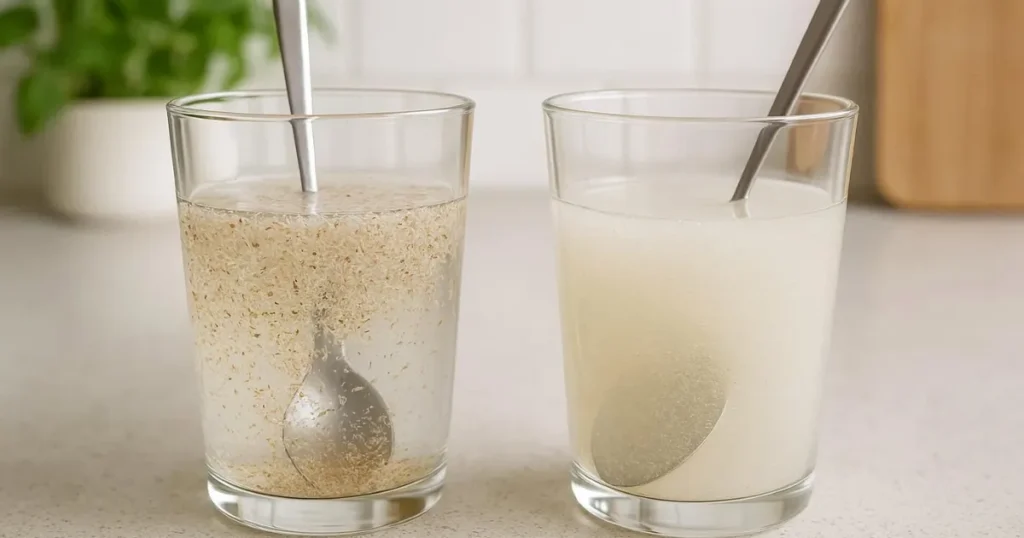
Absorption Speed and Digestive Impact
The absorption rate difference between whole psyllium husk vs powder significantly affects your digestive experience. Powder’s rapid water absorption means it begins working in your stomach immediately, swelling quickly to create bulk. This faster action can be beneficial for acute constipation relief, but may feel intense if you’re not accustomed to high fiber intake.
Whole husk takes longer to fully hydrate, continuing to absorb water throughout its journey through your digestive tract. This gradual process often feels gentler on sensitive stomachs. The slower absorption also means the whole husk has a slightly extended transit time, which some people find more comfortable for daily regularity maintenance.
From a clinical perspective, both forms effectively increase stool bulk, soften consistency, and promote regular bowel movements. Studies show comparable efficacy when equal amounts of fiber are consumed. However, individual responses vary. Some people tolerate powder better because it doesn’t leave fiber particles in their teeth or mouth. Others experience less bloating with whole husk because the absorption happens more gradually.
The gel formation itself is crucial for psyllium’s health benefits. Both forms create this viscous gel that slows glucose absorption, helps lower cholesterol by binding bile acids, and promotes satiety for weight management. The gel quality differs slightly – powder typically forms a more uniform, thicker gel, while whole husk creates a looser, more fibrous gel with visible particles.
Dosage and Convenience Comparison
| Factor | Whole Psyllium Husk | Psyllium Husk Powder |
| Standard Dose | 1 tablespoon (7-10g) | 1 teaspoon (5g) |
| Water Required | 8-12 oz | 8-10 oz |
| Mixing Time | 30-60 seconds | 10-20 seconds |
| Drinking Window | 2-3 minutes | 30-60 seconds (gels faster) |
| Travel Friendly | Less compact | More compact |
| Measuring Ease | Requires tablespoon | Easier to dose precisely |
| Taste | Slightly nutty | Nearly flavorless |
| Storage | Bulkier container | Smaller container |
Notice that powder requires less volume per dose because grinding increases concentration. One teaspoon of powder often provides similar fiber content to one tablespoon of whole husk. This makes powder more economical for long-term use and easier for travel – you can carry a week’s supply in a small container.
However, whole husk’s larger particle size makes it nearly impossible to accidentally inhale, while powder’s fine texture requires careful handling to avoid breathing it in. This matters especially for people with respiratory sensitivities or when mixing in dusty kitchens.
Health Benefits: Does Form Change Effectiveness?
Both whole psyllium husk vs powder deliver impressive health benefits because they contain the same active compound – soluble fiber that becomes mucilaginous when wet. The fiber content remains consistent regardless of form, typically 70-80% by weight.
Digestive Health:
Both forms relieve constipation by increasing stool bulk and water content. They also help with diarrhea by absorbing excess liquid. The whole husk’s coarser texture may provide more mechanical stimulation to intestinal walls, potentially enhancing peristalsis. Powder’s smoother consistency might be preferable during inflammatory bowel episodes when rough textures irritate.
Cholesterol Management:
Clinical studies using both forms show comparable LDL cholesterol reductions of 5-10% when consuming 10-12g daily. The gel binds bile acids, forcing your liver to use cholesterol to make new bile. Since powder creates a slightly denser gel, some research suggests marginally better bile acid binding, but practical differences are minimal.
Blood Sugar Control:
Both forms slow carbohydrate absorption by creating a viscous barrier in your intestines. This helps prevent post-meal blood sugar spikes. Powder’s faster gel formation might provide slightly quicker glycemic control, but whole husk offers more sustained effects throughout digestion.
Weight Management:
The satiety effect – feeling fuller longer – works with both forms. Powder’s rapid swelling in the stomach may create a quicker fullness sensation, while whole husk provides longer-lasting satiety as it continues absorbing water throughout the digestive tract.
Heart Health:
Beyond cholesterol, psyllium’s fiber helps reduce blood pressure and inflammation markers. These cardiovascular benefits remain consistent across forms when equivalent fiber amounts are consumed.
From my experience working with nutritionists and wellness centers globally, the form matters less than consistency. Taking 5g of powder daily beats occasionally taking 10g of whole husk. Choose the form you’ll actually use every day.

Baking and Cooking Applications.
In the kitchen, the whole psyllium husk vs powder debate takes on new dimensions. Gluten-free bakers particularly care about this distinction because psyllium serves as a crucial binding agent that mimics gluten’s elasticity.
Gluten-Free Baking:
Powder wins for cakes, muffins, and cookies where smooth texture matters. It distributes evenly through batter without creating visible specks. Use 1-2 teaspoons per cup of gluten-free flour. The powder absorbs excess moisture and creates structure, preventing crumbly, dry results.
Whole husk works beautifully in artisan breads, crackers, and rustic baked goods where texture is desirable. The visible fiber flecks add visual interest and a slight nutty flavor. Use the same measurement as powder, but expect a slightly denser, chewier result.
Thickening Agent:
Powder excels at thickening sauces, gravies, and soups invisibly. Just 1/2 teaspoon can thicken a cup of liquid within minutes without altering flavor. Whole husk works for this too, but creates a more rustic, textured consistency – great for stews and chunky sauces.
Breakfast Bowls and Smoothies:
Whole husk adds pleasant texture to overnight oats, chia puddings, and smoothie bowls. The fiber pieces create interest rather than disappearing completely. Powder blends invisibly into protein shakes and fruit smoothies, boosting fiber without changing the expected smooth consistency.
Egg Replacement:
In vegan baking, powder substitutes for eggs more effectively than whole husk. Mix 1 tablespoon of powder with 3 tablespoons of water, let it gel for 2-3 minutes, and use it to replace one egg. The smooth gel integrates better into batters than the whole husk’s coarser gel.
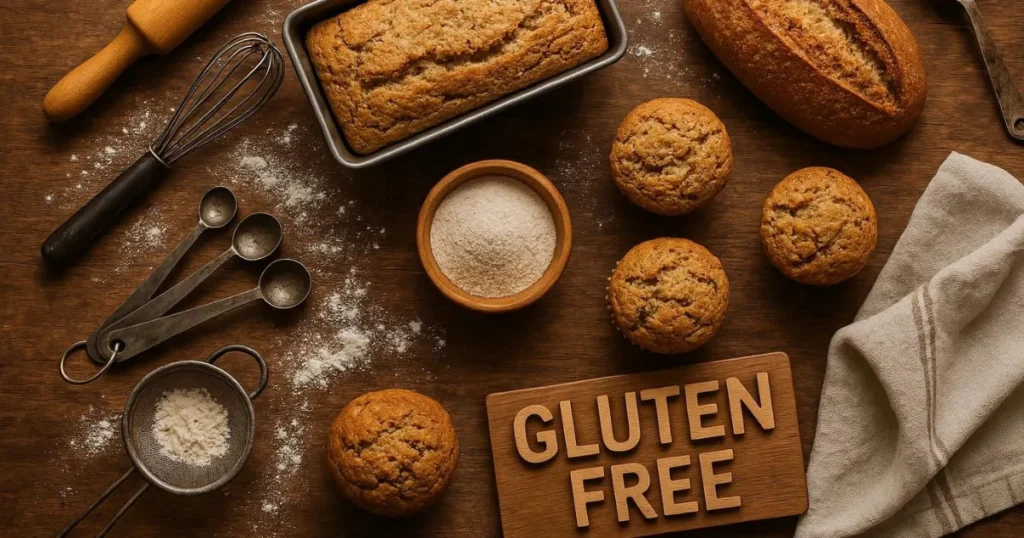
Cost and Value Analysis.
Price differences between whole psyllium husk vs powder vary by brand and quality, but generally, whole husk costs slightly less per pound. This happens because powder requires an additional processing step – grinding adds manufacturing costs.
However, the value equation isn’t just about price per pound. Since powder is more concentrated, you need less per dose. A 500g container of powder typically provides more servings than a 500g container of whole husk. When calculated per serving of equivalent fiber, the costs often balance out.
Quality matters enormously in this category. Premium organic psyllium from reputable sources costs more but delivers superior purity, better flavor, and fewer contaminants. Lower-grade products may contain more seed particles, require higher doses for effectiveness, or have inconsistent fiber content.
Buying in bulk typically saves 30-50% compared to small retail packages. For regular users consuming 5-10g daily, this adds up to significant savings annually. Quality suppliers offer bulk options in both forms, often with wholesale pricing for larger quantities.
Storage longevity affects value, too. Both forms last 2-3 years when stored properly in airtight containers away from moisture and heat. Powder’s finer texture makes it slightly more susceptible to clumping in humid environments, while whole husk remains free-flowing more easily. Neither form loses nutritional value significantly over time if stored correctly.
Side Effects and Safety Considerations.
Both whole psyllium husk vs powder are exceptionally safe for most people when used correctly, but they do come with important usage guidelines.
Common Side Effects:
Bloating and Gas:
More common when starting psyllium or increasing doses too quickly. Powder may cause this slightly more due to faster fermentation. Start with half doses and gradually increase over 1-2 weeks.
Intestinal Cramping:
Usually indicates insufficient water intake. Both forms require adequate hydration – drink at least 8 oz of water per dose and increase daily water intake by 2-4 cups.
Choking Risk:
Powder poses a slightly higher risk if consumed dry or without sufficient liquid because it swells so rapidly. Always mix thoroughly and drink immediately.
Allergic Reactions:
Rare but possible with both forms. Symptoms include itching, breathing difficulty, or rash. Discontinue use and seek medical attention if these occur.
Who Should Exercise Caution:
- People with swallowing difficulties should prefer powder mixed into thick foods like yogurt rather than drinks.
- Those with intestinal narrowing or blockages should consult healthcare providers before using either form.
- Individuals on medication should take psyllium 2-4 hours apart from drugs because fiber can affect absorption.
- People with severe dust allergies may tolerate whole husk better than fine powder.
Medication Interactions: Both forms can reduce absorption of certain medications, including diabetes drugs, cholesterol medications, and some antidepressants. Timing matters more than form – maintain that 2-4 hour gap between psyllium and medication doses.
Expert Recommendations: When to Choose Which.
After decades working with psyllium and consulting with healthcare professionals worldwide, here’s my practical guidance for choosing between whole psyllium husk vs powder:
Choose Whole Psyllium Husk if you:
- Prefer natural, minimally processed options.
- Want visible confirmation of fiber in your food.
- Find coarser textures more satisfying.
- Need slower, gentler digestive action.
- Plan to add to textured foods like oatmeal or yogurt bowls.
- Have concerns about accidentally inhaling fine powder.
- Prefer slightly less frequent dosing with larger amounts.
Choose Psyllium Husk Powder if you:
- Want invisible fiber addition to smooth beverages.
- Need quick mixing for busy mornings.
- Prefer compact, travel-friendly packaging.
- Plan to use in baking, especially gluten-free recipes.
- Want precise, easy dosing in smaller amounts.
- Prefer a completely smooth texture without graininess.
- Need a versatile ingredient for various recipes.
Can’t Decide? Consider Both:
Many experienced users keep both forms of whole psyllium husk vs powder. Use powder for baking, smoothies, and quick morning drinks. Use whole husk for bowl toppings, slower-release benefits, and when texture is desirable. This approach maximizes the unique advantages of each form.
Quality brands like Malik Psyllium source their psyllium from the same high-grade crops, whether producing husk or powder. The health benefits remain equivalent – it’s the practical, lifestyle factors that should guide your choice. As producers who’ve refined psyllium cultivation and processing to an art form, we ensure both versions maintain the exceptional purity and effectiveness that psyllium users worldwide have come to expect.
Practical Usage Guide and Pro Tips.
For Beginners:
Start with 1/2 the recommended dose regardless of whole psyllium husk vs powder. Your digestive system needs time to adapt to increased fiber. Increase gradually over 7-14 days to full dosage. This prevents uncomfortable bloating and cramping.
Optimal Timing:
- Morning (30 minutes before breakfast): Best for weight management and blood sugar control.
- Before bed: Ideal for morning bowel movements.
- Before high-carb meals: Most effective for glycemic control.
- Afternoon (if taking twice daily): Maintains consistent fiber intake.
Mixing Methods:
For whole husk:
Add to liquid, stir vigorously for 30 seconds, let sit 10-15 seconds, stir again, and drink within 2-3 minutes. Follow with another glass of plain water.
For powder:
Add to liquid, shake or stir vigorously for 10-15 seconds, and drink immediately. The 30-second window matters – beyond that, it becomes too thick. Chase with water.
Hydration is Critical:
This can not be overstated. Psyllium works by absorbing water – 10-15 times its weight. Without adequate water, it can worsen constipation or cause intestinal discomfort. Drink at least 8 oz with your dose, plus an additional 6-8 glasses throughout the day.
Combining with Other Supplements:
Both forms pair well with probiotics, digestive enzymes, and magnesium. Take probiotics 2 hours after psyllium to prevent fiber from binding beneficial bacteria. Magnesium and psyllium together create a powerful combination for constipation relief.
Storage Tips:
Keep in airtight containers in cool, dry locations. Bathroom cabinets are terrible storage spots – humidity damages fiber quality or whole psyllium husk vs powder. Pantries or kitchen cabinets away from stoves work best. Properly stored psyllium maintains effectiveness for 2-3 years.
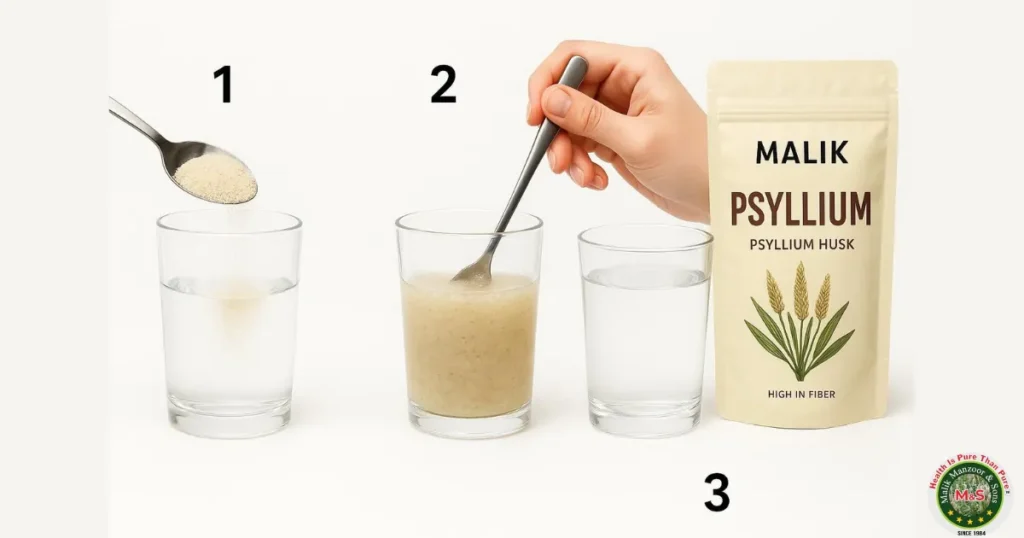
Real User Experiences and Testimonials.
Over the years, I’ve received thousands of messages from people sharing their experiences with whole psyllium husk vs powder. These patterns emerge consistently:
Constipation Relief Success: “I started with powder because it seemed easier, but it worked so fast it felt intense. Switched to whole husk and found the gentler action perfect for daily maintenance. Now I’m regular for the first time in years.”
Weight Loss Journey: “Powder in my morning protein shake has been a game-changer. I don’t even taste it, but I stay full until lunch. Lost 15 pounds in three months just by reducing snacking.”
Gluten-Free Baking Discovery: “After years of crumbly gluten-free bread, psyllium powder changed everything. My loaves actually hold together now! I tried whole husk once – too much texture for sandwich bread, but perfect for rustic rolls.”
Cholesterol Management: “My doctor suggested psyllium for high cholesterol. Started with whole husk twice daily. After three months, my LDL dropped 22 points. Lab results don’t lie – this stuff works.”
Diabetic Control: “Type 2 diabetic here. Taking powder before meals has smoothed out my blood sugar spikes significantly. My A1C improved enough that my doctor reduced my medication.”
Can I switch between whole psyllium husk vs powder without adjusting my dose?
Not exactly. Use about half the amount when switching from whole husk to powder because powder is more concentrated. If you take 1 tablespoon of whole husk, try 1 1/2 to 2 teaspoons of powder for similar fiber content. Monitor your response and adjust accordingly.
Does grinding whole psyllium husk at home give me the same product as commercial powder?
Close, but not identical. Home grinding in a coffee or spice grinder creates a coarser powder than commercial versions. It works perfectly fine for most uses, though it may not blend as smoothly in beverages. The fiber content and health benefits remain the same.
Which form is better for children, whole psyllium husk vs powder?
Powder mixed into applesauce, yogurt, or smoothies works best for children because it’s invisible and flavorless. Start with very small amounts – 1/4 teaspoon for young children, gradually increasing as tolerated. Always ensure adequate water intake and consult a pediatrician before starting fiber supplements.
Can I take psyllium husk or powder during pregnancy?
Both forms are generally safe during pregnancy for relieving constipation, a common pregnancy complaint. However, always consult your obstetrician first. Most healthcare providers approve 1-2 teaspoons of powder or 1 tablespoon of whole husk daily with plenty of water.
How long does it take to see results with either form?
For constipation relief, most people notice improvement within 12-48 hours. For cholesterol and blood sugar benefits, expect 4-8 weeks of consistent use before seeing measurable changes in lab results. Weight management effects typically become noticeable after 2-4 weeks.
Is organic psyllium worth the extra cost?
Organic psyllium ensures no pesticide residues and typically indicates higher quality control standards. For daily, long-term use, the investment makes sense. Both forms are available in organic varieties with comparable price premiums over conventional options.
Can I use whole psyllium husk vs powder if I’m on a keto diet?
Absolutely! Both forms are extremely low in net carbs – the fiber doesn’t count toward carb limits. Psyllium actually helps keto dieters maintain digestive regularity despite reduced plant food intake. It also works wonderfully in keto baking as a binding agent.
What’s better for IBS – whole psyllium husk vs powder?
This varies individually. Some IBS sufferers find powder gentler because it doesn’t mechanically irritate sensitive intestinal walls. Others tolerate whole husk better because it absorbs water more gradually. Start with very small doses of either form and increase slowly while monitoring symptoms.
Making Your Final Decision.
The whole psyllium husk vs powder question doesn’t have a universally correct answer because it depends entirely on your lifestyle, preferences, and health goals. Both forms deliver the same core benefits: improved digestion, cholesterol management, blood sugar control, and enhanced satiety. The fiber that makes psyllium so valuable remains identical regardless of whether it’s ground or whole.
Consider your daily routine. If you’re constantly rushing mornings, powder’s quick mixing might save you precious minutes. If you enjoy leisurely breakfasts with textured bowls, whole husk adds pleasant fiber you can see and feel. Think about your cooking habits too – bakers need powder, while those who rarely use recipes might never notice.
Price-conscious buyers should calculate per-serving costs rather than per-pound prices. Quality matters more than saving a few dollars – premium psyllium from trusted sources delivers consistent results without contaminants or filler materials. Whether you choose whole husk or powder, invest in quality for the best health outcomes.
Personal experience plays a huge role in deciding between whole psyllium husk vs powder. Some people prefer one form’s texture, taste, or how it makes them feel. There’s no substitute for trying both and seeing which your body responds to best. Many people discover they like both for different purposes – powder for convenience and baking, whole husk for slower-release benefits and satisfying texture.
The beauty of psyllium is its versatility and proven effectiveness, regardless of the form, whole psyllium husk vs powder. As someone who’s devoted a lifetime to perfecting psyllium cultivation and processing, both whole husk and powder represent excellent choices for supporting your wellness journey. Choose based on your needs, stay consistent with your routine, and remember that adequate hydration makes all the difference.
Malik Shabbir
Featured Blogs
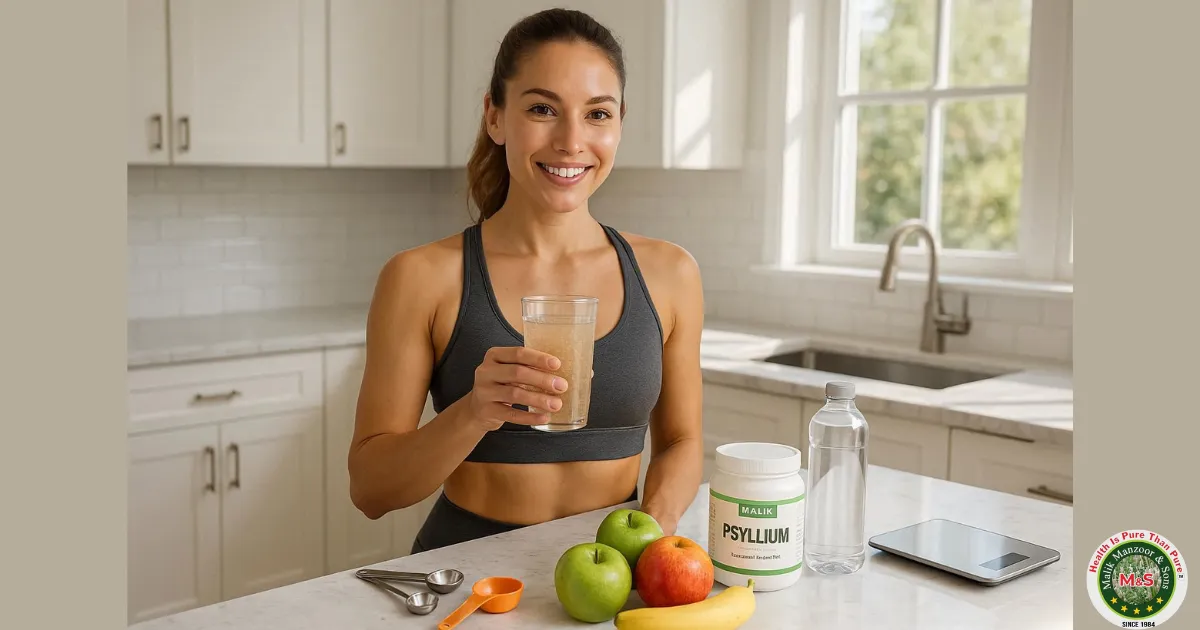
Psyllium Husk Powder Weight Loss: Your Complete Guide to Natural Fat Burning
Imagine losing stubborn belly fat without restrictive diets, expensive meal
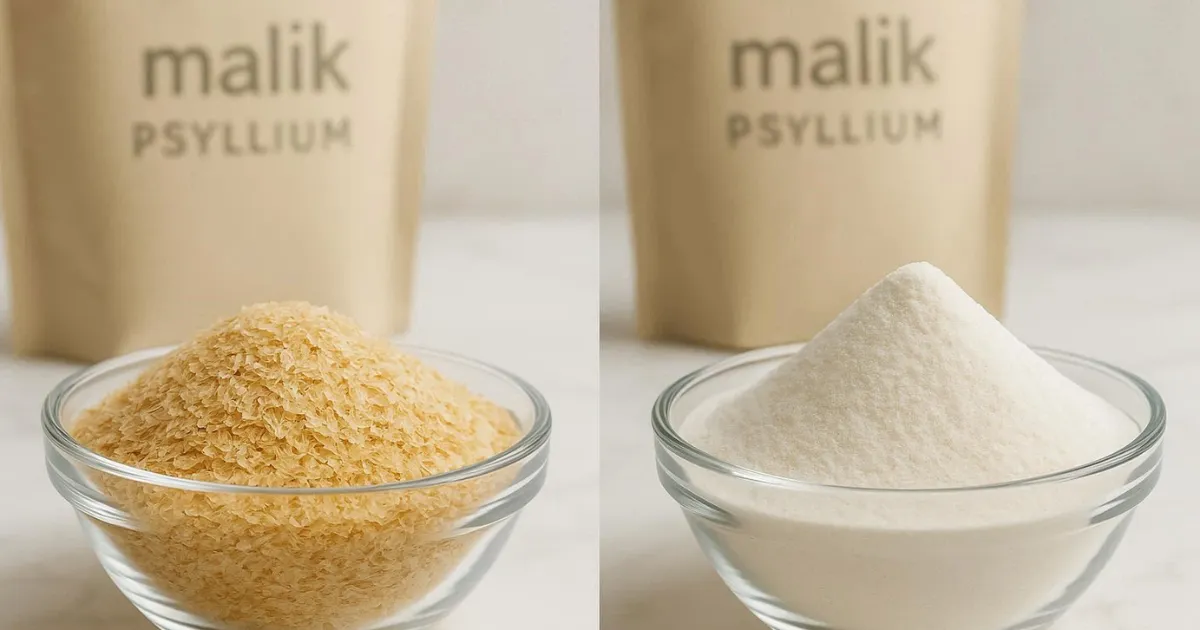
Whole Psyllium Husk vs Powder: Which Form Works Best for You? Experts Guide 2025
If you’ve ever stood in the supplement aisle wondering whether
